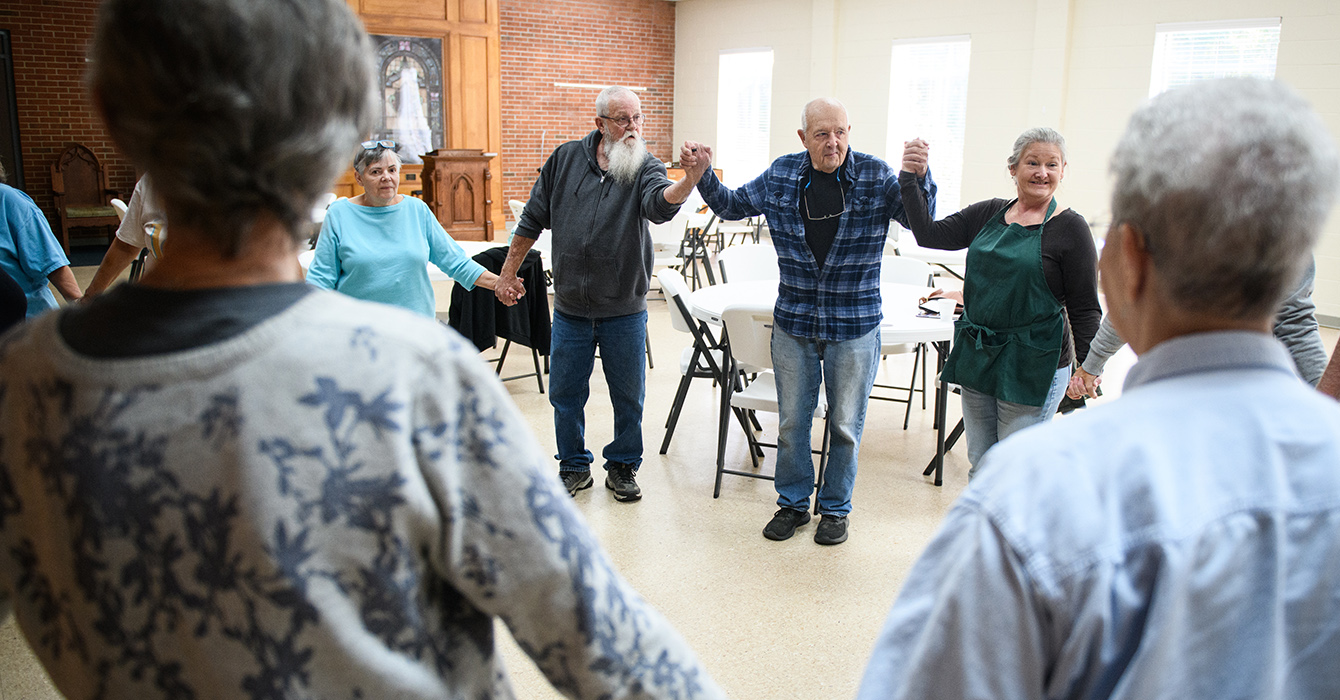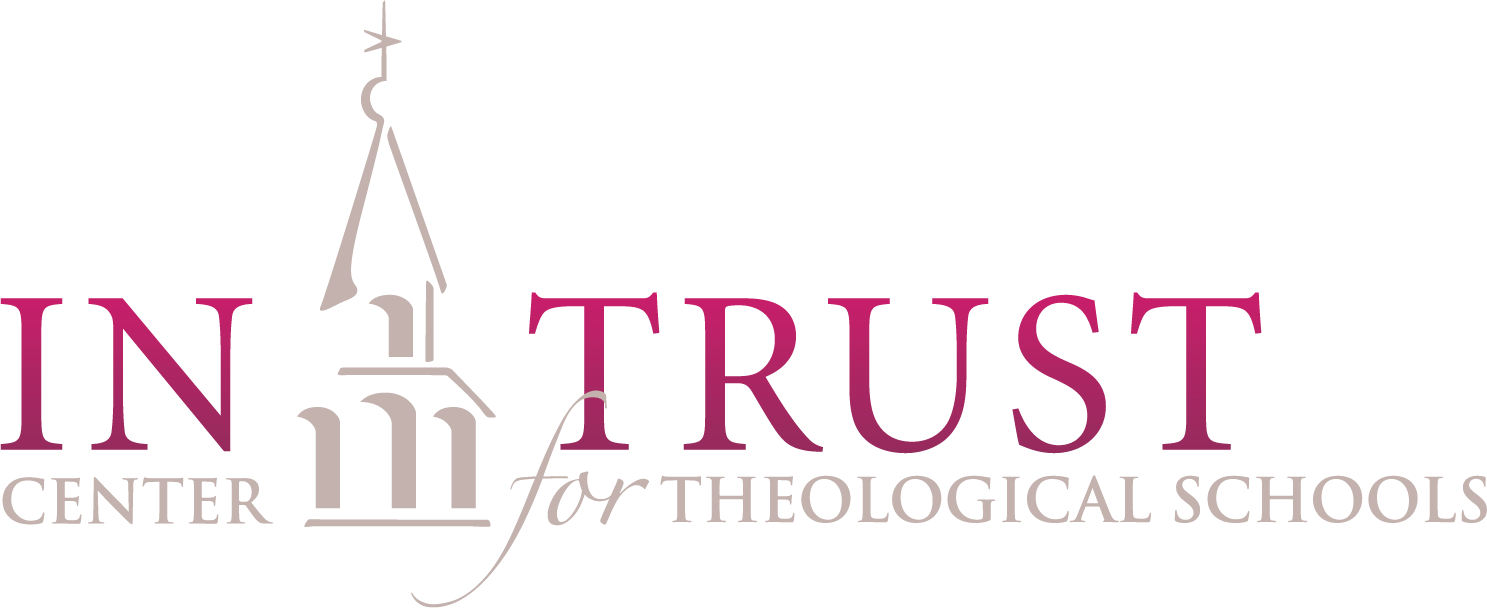In 2015, religion journalist David Van Biema was invited to Manhattan’s Les Enluminures gallery to view a book from the Liesborn abbey in Germany.
The $6.5 million ceremonial book, with an oak cover and vellum pages, contained the four Gospels. It was rare, but even more intriguing was a drawing made on the blank first page.
It looked like something from J.R.R. Tolkien’s Middle Earth, yet it was recognizably Christian: a circular diagram of concentric bands, labeled in Latin.
In the center of the bull’s-eye was the word “Deus” -- God. Around the edge was a riddlelike instruction, which translates: “THE ORDER OF THE DIAGRAM WRITTEN HERE TEACHES THE RETURN HOME.”
It was a Da Vinci Code experience that raised many questions -- How was the diagram used 900 years ago? And how could it be used today?
Writers Jana Riess and Patton Dodd joined Van Biema in the quest to solve the mystery of the Liesborn Prayer Wheel. The result is the new book “The Prayer Wheel: A Daily Guide to Renewing Your Faith with a Rediscovered Spiritual Practice.”
 Riess, an author, speaker, editor and columnist for Religion News Service, spoke with Faith & Leadership about the book and how contemporary Christians can employ this lost practice. The following is an edited transcript.
Riess, an author, speaker, editor and columnist for Religion News Service, spoke with Faith & Leadership about the book and how contemporary Christians can employ this lost practice. The following is an edited transcript.
Q: What do we know about the prayer wheel?
It’s pretty unusual that you would rediscover a spiritual practice. The diagram is about 900 years old; the book of Gospels is older than the diagram inside it.
From what we’ve been able to determine, [the prayer wheel practice] was limited to monasteries and convents. Someone might have used one of these diagrams in training people who were not literate, but we don’t have any record of that.
What we do know is that there were hundreds of these wheels at one time. We can also trace the fact that they become more complicated as time goes on. I find that part of the story very interesting. Our wheel is the second-oldest that we’ve been able to track down; ours dates from about 1100.
And there is one mentioned in the one dissertation that’s been written about prayer wheels -- or rotae in Latin -- that says that one was created in 1075. So far, that’s the earliest one we know of.
It’s very simple; it’s kind of classically biblical. [The wheels] have these texts from the Lord’s Prayer, the gifts of the Holy Spirit as found in Isaiah, the Beatitudes from the New Testament and scenes from the life of Christ, all of which are pretty standard-issue biblical texts.
What happens, though, with wheels over time is that people begin adding. For example, on wheels of seven like ours, they would add the seven sacraments or the seven deadly sins and the seven virtues or the seven spheres of knowledge -- which I didn’t know was a thing, but in medieval life, apparently, they believed that knowledge could be divided into seven categories.
And so they become pretty elaborate. I even saw one that had 12 on 12: 12 apostles, 12 signs of the zodiac, 12 tribes of Israel. So they do become pretty complex over time.
Q: What made you think that this could be useful for contemporary Christians?
Well, a couple of things. The first is just that classic Christian basis; this is pretty foundational, and we’re living in a time when it can’t really be taken for granted that people are going to know the Lord’s Prayer or the Beatitudes or even what happened in the basic narrative of the life of Christ.
And so the wheel comes along as a way of encapsulating some of the core doctrines of the faith in a way that is visually simple but also endlessly complex.
And the second thing is that visual nature of it. I can’t imagine a time in history when we have been more visually oriented since the Middle Ages.
So the wheel -- which is kind of like an infographic, a divine infographic -- is, I would say, uniquely positioned to appeal to a visual way of learning that has come to the fore in our time.
Q: How does the prayer wheel work?
You can go to the website and download a free copy of the wheel. It’s so much easier for people to understand if they can see it.
In the center of the wheel is God, and radiating out from that center are seven paths; it’s kind of helpful visually to think of them as the wedges of a pie.
Within each wedge, there are several different things: one part of the Lord’s Prayer, one gift of the Holy Spirit, one scene from the life of Christ and one beatitude, which has two components -- the blessing and the promise. It is arranged so that it looks like a bull’s-eye.
The book is structured so that you begin in the outer rim with that particular part of the Lord’s Prayer, and then you go in deeper and deeper through these other elements until you come to the center, which is God.
The idea of combining these things predates the wheel; it goes back to Augustine. There’s been a tradition for centuries of pairing up part of the Lord’s Prayer with one of these gifts of the Holy Spirit and one of the Beatitudes.
 Q: Who is the audience for your book?
Q: Who is the audience for your book?
Anyone can work with this, but it’s not an instant spiritual practice.
Someone who’s picking this up and thinking it’s going to be “Here are the five steps to knowing Jesus” is going to be disappointed, because it takes time. This is an ancient spiritual practice. It is a rigorous one, and it takes a commitment.
Q: How do you hope people will use it?
Frankly, the way I would have answered that six months ago and the way I answer it today are very different.
Six months ago, I would have said, “This is the way to do it: Start at the outside, work your way in. Go in the order of the paths so that you start at the top, where the cross is; you start with ‘Holy is your name.’ Go to the left next time; go to the second path with ‘Your kingdom come.’ And go through all seven paths.”
We had a Lenten practice in our Facebook group where we did this every day.
But now I have seen other people be creative with it. It has been very interesting to see people begin to kind of assimilate the wheel for themselves.
One guy in the Facebook group actually made a wheel out of a pizza box. People have expressed interest in having each concentric circle within the ring be able to spin.
So I’m a lot more open to people praying it in whatever way strikes them.
To be honest, we are trying to reverse-engineer a spiritual practice for which nobody left instructions.
Q: You have the physical object of the drawing, but you are interpreting how one might employ it. So you’re interpreting it just as anyone who gets the book will interpret it?
There are some things that we know, but there’s far more that we don’t know about how these were used.
There’s a very strong reason to think they were used mnemonically for memorizing these elements. In the research for the book, I worked through a wonderful book by scholar Mary Carruthers, who wrote about memorization in medieval times.
Memorization was hugely important in a way that it just isn’t to us anymore. And the medieval Christians in particular were very interested in creating visual diagrams. They could be trees; they could be circles like this. Ladders were popular.
Medieval monks would be able to see the diagram in their minds and know exactly where everything fits.
Q: How do you guide people in the book?
The first part of the book, after the historical introduction, is seven weeks of prayer. What we did for Lent is that initial suggested practice.
And the reason for that is just to familiarize yourself with every part of the wheel individually, and then also how they begin to fit together. Because that’s where the cool stuff happens. That’s where we begin to have these moments of recognition.
But like I said, we want people to feel free to pray in their own way.
Patton wrote a section about how to pray the wheel with different biblical passages. And then at the end of the book, we invite people to just spin the wheel and pray.
Q: This reminds me of prayer beads, where there’s something about the physicality of it that helps people pray.
I think that prayer beads are a great analogy. In the course of the research, we spoke with one medieval historian who had noticed something we had not, which is that there are finger smudges on the original wheel -- which would suggest that someone was touching it and praying at the same time.
I have to say this is an area where David and Patton and I don’t necessarily agree. To me, the touching part has been a lot more important than it has to them.
I think of this as almost a finger labyrinth -- that you are tracing the spiritual path, and that there is something powerful in that sense of being connected to something greater than yourself.
David does not pray the wheel, which is why Patton and I were brought into this in the first place. But for Patton, it’s not so much a tangible physical experience as a deeper spiritual one. Everyone’s different.
Q: Let’s talk a little bit about that. What are your backgrounds, and what has each of you brought to the project?
We are a strange crew of interfaith writers, which I think has been such a strength for the book.
David is a self-described secular Jew who writes beautifully about religion and has a deep respect for religion but does not pray or practice faith himself.
Patton is evangelical. He has written a memoir about life in Pentecostal circles up until his mid-20s, and he is still very much involved in evangelicalism. But his faith has changed somewhat over time.
And I’m a Mormon who probably would be considered left of center within my tradition. I’m still active in my church, but I’m a blogger and a feminist and have been critical of some things.
So each of us has a different perspective. For us, the biggest lacuna in our troika of people was that we didn’t have a Catholic. This is a Catholic spiritual practice.
So we were so grateful when Father James Martin gave the foreword for the book. He had some pretty wonderful things to say about the wheel and what a cool discovery it is. Also Richard Rohr.
So we’ve been trying to incorporate that voice that none of us has inherently.
Q: What has it brought to your life as a Christian?
Perspective. Having gone through the Lenten Facebook practice, for example -- that was one of the main takeaways for me. The wheel incorporates both the triumphs and the despair of the spiritual journey.
And it does this in such a compact way that you kind of miss it unless you’re going through it every day. So Lent was particularly helpful for me in that respect.
I would say that it takes me to a deeper place where I’m able to recognize the continuity of Christian faith through the ages in a way that I was aware of, but maybe not so viscerally.
Also the idea of the invocation; I haven’t mentioned that yet. But in the perimeter of the wheel, it says [translated into English], “The order of the diagram written here teaches the return home.” It explains the purpose of the wheel.
Because God is in the center, we believe that God is intended to be what is “home” for this diagram.
And to me, there is something very helpful about the fact that even though each of these elements is incredibly rich in itself, the real joy is connecting them together, and that they all lead to the same destination -- they all lead to God.













